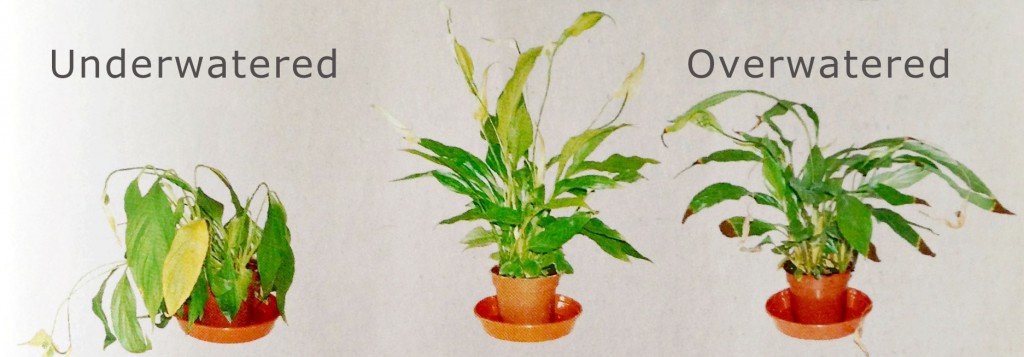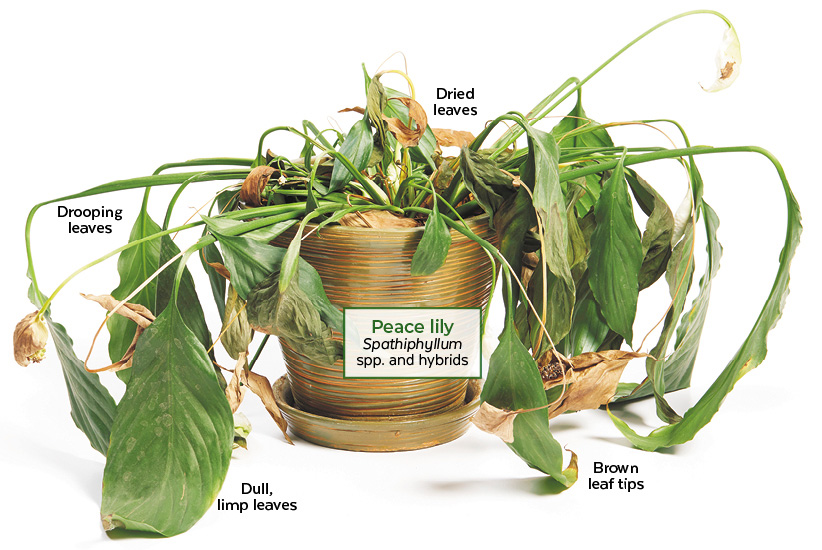To fix an underwatered plant, gradually increase watering frequency, ensuring the soil is moist but not soggy. Additionally, provide proper drainage and monitor the plant for signs of recovery.
A lack of water can cause significant damage to plants, leading to wilted leaves, stunted growth, and even death. If you notice your plant is underwatered, it’s crucial to take immediate action to restore its health. We will explore the steps you can take to fix an underwatered plant and promote its recovery.
By following these guidelines, you can help your plant regain its strength and vitality. Let’s dive in and learn how to revive your underwatered plant.

Credit: www.binleyflorist.com
Understanding The Signs Of Underwatering
Understanding the signs of underwatering is crucial in fixing an underwatered plant. Lack of moisture directly affects the plant’s health. Wilting leaves are a common indication of inadequate watering. The plant’s growth is also stunted when it doesn’t get enough water.
To remedy this, one should ensure the soil is moist and water the plant regularly. Watering deeply and allowing excess water to drain out can help revive the plant. Additionally, placing the plant in a tray of water for a few minutes can help it absorb moisture.
Monitoring the plant’s water needs and adjusting watering schedules accordingly is key. By addressing the signs of underwatering promptly, plant enthusiasts can revive their struggling plants and promote healthy growth.
Assessing The Impact Of Underwatering
Underwatered plants can suffer significant damage, so it’s vital to assess the impact accurately. Start by checking the soil moisture levels, since dry soil is a clear indicator of underwatering. Next, examine the health of the roots. If they appear brown, dry, or stunted, it’s a sign that they are not getting enough water.
Additionally, be on the lookout for specific plant symptoms such as wilting, yellowing leaves, or leaf drop. These symptoms can vary depending on the plant species, so it’s important to identify them correctly. By addressing the issue of underwatering promptly and providing the right amount of water, the plant can recover and thrive once again.
Remember that regular monitoring and maintaining proper watering practices are crucial to prevent future issues.
How to Fix Underwatered Plant: Step by Step
Correct Underwatering
Underwatering plants can lead to their decline, but fear not, there are ways to fix this! First, adjust your watering routine by ensuring consistency. Water when the top inch of soil is dry, but be cautious not to overwater. Properly hydrating the plant is crucial, so water thoroughly until it drains from the bottom.
Allow any excess water to escape from the drainage holes. Regularly check the moisture balance by sticking your finger into the soil. If it feels dry, add water, but if it’s still damp, hold off. Remember, balance is key. By following these steps, you can revive your underwatered plant and restore its health.
Happy gardening!
Adjusting Watering Routine
Determining the right watering schedule for your plants is crucial in maintaining their health. Properly adjusting your watering routine can help fix underwatered plants. One key aspect to consider is ensuring adequate drainage for your plants. This ensures that excess water can easily flow out, preventing overwatering.
Overwatering can lead to root rot and other issues that can harm the plant. By paying attention to the specific watering needs of your plants and providing sufficient water without going overboard, you can help revive underwatered plants and promote their growth.
So, take the time to understand your plants’ watering requirements and adjust your routine accordingly to keep them happy and healthy.
Properly Hydrating The Plant
Properly hydrating an underwatered plant requires gradually reintroducing water to ensure thorough hydration. Start by choosing the appropriate watering method that suits the plant’s needs. Avoid overwatering, as it may further damage the plant. Instead, water the plant gradually, allowing the soil to absorb the water fully.
This prevents water runoff and ensures that the plant’s roots receive sufficient moisture. Take note of the plant’s specific water requirements, and adjust the watering frequency accordingly. Monitor the plant closely to ensure that it receives the right amount of hydration without being overwatered.
By following these guidelines, you can effectively fix an underwatered plant and promote its healthy growth.
Restoring Moisture Balance
Restoring moisture balance in underwatered plants can be achieved through mulching the soil. By applying a protective layer of organic material around the plant’s base, moisture evaporation is reduced, promoting water retention. Increasing humidity levels in the plant’s environment also helps restore moisture balance.
This can be done by placing a small tray filled with water near the plant or using a humidifier. Monitoring the plant’s response is crucial in determining if the underwatering issue is being resolved. Look for signs such as improved leaf color, increased foliage growth, and a more upright posture.
Adjust watering frequency and amounts accordingly to prevent over or under watering. Remember that striking a balance between underwatering and overwatering is essential for the health and well-being of your plants.
Preventing Underwatering In The Future
Fixing an underwatered plant requires preventive measures to avoid future instances. One effective method is creating a watering schedule tailored to each plant’s specific needs. Understanding the moisture requirements of your plants is crucial in preventing underwatering. Additionally, using moisture-retaining tools like self-watering containers or adding mulch can help retain moisture in the soil, ensuring adequate hydration for your plants.
By implementing these strategies, you can maintain healthy and thriving plants, preventing the negative effects of underwatering. Remember to regularly assess your plants’ moisture levels and adjust your watering routine accordingly to promote optimal growth and vitality.
Creating A Watering Schedule
Creating a watering schedule for your plants is crucial to ensure they receive the right amount of water. Take into consideration environmental factors such as humidity and temperature. Keep track of the watering patterns, noting how often and how much you water each plant.
Adapt your watering routine to seasonal changes, as different plants have varying water requirements throughout the year. Remember to water your plants thoroughly, allowing the water to reach the roots. Avoid overwatering, as this can lead to root rot. Regularly check the moisture level of the soil by using a finger or moisture meter.
Adjust the watering schedule as needed, providing more water during hot and dry periods, and less during cooler months. By following these steps, you can fix and prevent underwatered plants, promoting healthy growth and vibrant foliage.
Understanding Plant-Specific Needs
Plant care involves understanding the specific needs of different plants and researching their requirements. This includes considering factors such as the amount of sunlight, humidity levels, and watering needs. Adjusting watering habits according to the plant’s specific needs is crucial to prevent both underwatering and overwatering.
Signs of underwatering include yellowing leaves, wilting, and dry soil. On the other hand, overwatering can lead to root rot, mold growth, and stunted growth. It is important to pay attention to the plant’s condition and adjust watering accordingly. Regularly checking the moisture level of the soil and providing the right amount of water can help revive an underwatered plant.
Taking the time to learn about individual plants and their specific requirements will ensure healthier and more successful plant care.
Using Moisture-Retaining Tools
A crucial aspect of fixing an underwatered plant is utilizing moisture-retaining tools. These tools aid in maintaining the optimal moisture levels required for healthy plant growth. When selecting a potting mix, it is essential to choose one that is well-draining but also retains moisture effectively.
This ensures that the plants receive the necessary hydration without becoming waterlogged. Employing self-watering systems can also be beneficial, as they provide a consistent source of moisture for the plants. These systems incorporate reservoirs or wicks that gradually release water, preventing the plants from drying out.
Additionally, utilizing soil additives such as peat moss or vermiculite can enhance moisture retention. These additives improve the soil’s ability to hold water and distribute it evenly to the plant’s roots. By implementing these methods, you can effectively revive and care for your underwatered plants.
Frequently Asked Questions On How To Fix Underwatered Plant
Can A Plant Recover From Being Underwatered?
Yes, a plant can recover from being underwatered with proper care and attention. Watering the plant adequately and providing it with the right amount of moisture can help it recover. It is important to ensure that the plant’s roots are well hydrated, and the soil is consistently moist but not waterlogged.
Additionally, carefully observing the plant for any signs of dehydration like wilting or yellowing leaves and adjusting the watering schedule accordingly can aid in its recovery. Providing a suitable environment with adequate light, temperature, and humidity levels is also crucial for the plant’s revival.
Regularly monitoring the plant’s progress and making necessary adjustments to its care routine can help it bounce back from being underwatered.
How Do You Treat Underwatering?
To treat underwatering, you need to increase the amount of water your plants receive. First, check the soil moisture by sticking your finger a few inches into the soil. If it feels dry, it’s time to water. Slowly and evenly add water to the soil until it starts to come out of the drainage holes.
Allow the excess water to drain away and remove any standing water. Be mindful not to overwater, as it can lead to root rot. Create a watering schedule based on your plant’s needs and adjust it accordingly. Adding a layer of mulch can help retain moisture in the soil.
Consider using a moisture meter to accurately monitor the soil’s moisture level. Lastly, try to identify and address any underlying reasons causing underwatering, such as improper potting or drainage issues.
How Do You Know If A Plant Is Underwatered?
If the plant’s leaves are wilted, dry, and crispy to the touch, it is a sign that the plant is being underwatered. Additionally, underwatered plants may have yellowing leaves and soil that pulls away from the edges of the pot.
What Are The Signs Of An Underwatered Plant?
Signs of an underwatered plant include wilted and dry leaves, yellowing leaves, slow growth, and soil that cracks and pulls away from the edges of the pot. The plant may also become more susceptible to pests and diseases due to weakened defenses.
Conclusion
Properly watering your plants is essential for their overall health and growth. Underwatering can lead to a variety of issues, but with the right knowledge and techniques, it can be easily rectified. By observing your plants closely and understanding their specific water needs, you can ensure they receive the right amount of moisture.
Remember to water deeply and consistently, allowing the soil to dry slightly between waterings. Use a well-draining potting mix and adjust watering frequency based on the season and environmental conditions. Adding a layer of mulch can also help retain moisture in the soil.
Regularly check for signs of underwatering, such as wilting, drooping leaves, and dry soil. By following these guidelines and providing your plants with the appropriate amount of water, you can revive and nurture your underwatered plants back to their full potential.
Happy gardening!

